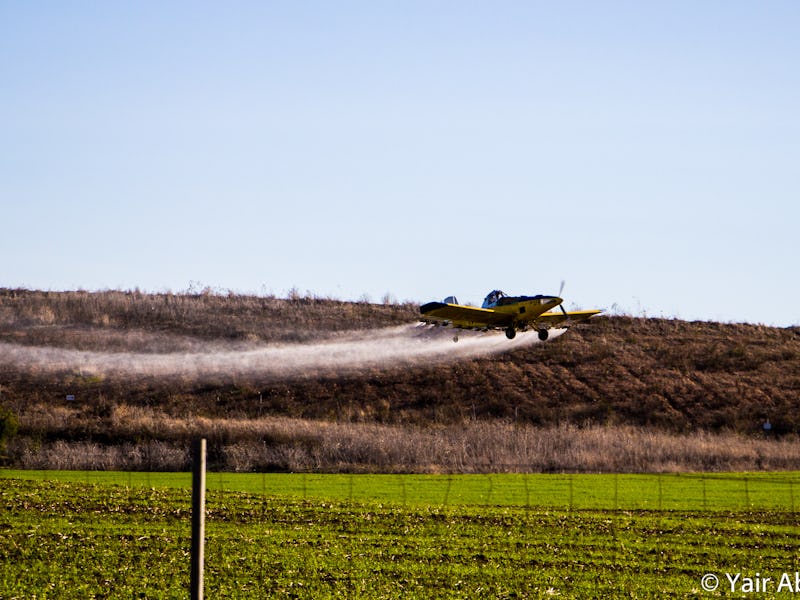Anti-Vaxxers Worried About Autism Should Be More Concerned About DDT
A chemical banned in 1972 has repercussions today.

Even though the Environmental Protection Agency banned the pesticide 46 years ago, DDT still shows up in organisms all over the world because it’s very resistant to breaking down in the environment. DDT is infamous for thinning bald eagles’ eggshells, driving them to near-extinction, but as scientists have discovered since it was banned in 1972, it also poses risks to human health. Now, scientists have evidence that the offspring of mothers exposed to DDT have a higher risk of developing autism.
In a paper published Thursday in the American Journal of Psychiatry, a team of researchers in the US and Finland present evidence that mothers who had relatively high levels of DDE (p,p’-dichlorodiphenyl dichloroethylene), a chemical that’s produced by the breakdown of DDT (dichlorodiphenyltrichloroethane), had significantly elevated chances of their children developing autism. Specifically, women whose children were autistic had much higher levels of DDE in their bodies than their peers whose children didn’t have autism. And when the children of these mothers with high DDE levels had intellectual disabilities, their chances of an autism diagnosis were more than doubled.
This study is far from the final answer on the link between environmental chemicals and autism, but it’s the first study to examine the relationship and suggests the area merits further research.
The American bald eagle nearly went extinct before DDT was banned in 1972.
“To our knowledge, this is the first biomarker-based evidence of this association,” write the study’s authors, led by Dr. Alan Brown, a professor of psychiatry at Columbia University Medical Center. They propose a potential explanation for their findings:
“Maternal exposure to DDT and DDE is associated with both premature birth and small gestational age status,” they write. These factors have both been identified as factors that could [contribute to autism risk]https://www.autismspeaks.org/science/science-news/study-provides-new-insights-link-between-prematurity-and-autism), suggesting that DDT and DDE may pose a previously unexplored risk.
To conduct this study, the researchers used data from the Finnish Prenatal Study of Autism, a large cohort study in which scientists obtained serum samples from expectant mothers during the first or second trimesters of pregnancy between 1987 and 2005. Out of over 1,000 autistic children identified by this study, the researchers selected 778 and matched them against 778 children who had comparable birth circumstances but had not been diagnosed with autism. Their mothers’ levels of DDE were then compared.
In the mothers whose DDE levels were in the 75th percentile or higher, the risk of autism in their children was 32 percent higher than their peers.
The study’s authors note that, since DDT gets amplified as it moves up the food chain and can be passed on from mother to child in the womb, its ban decades ago has not had a major effect on its presence in human bodies, especially in the US and Finland, two countries that used huge amounts of the chemical while it was legal.
One major weakness of the study, which the authors point out, is that since they didn’t examine children with intellectual disability but without autism, they can’t rule out the possibility that intellectual disability was not a contributing factor to autism in the children who had both. Nonetheless, it’s a start.
“This study has potential implications for the prevention of autism,” they write, and it may begin to help us better understand the factors contributing to autism.